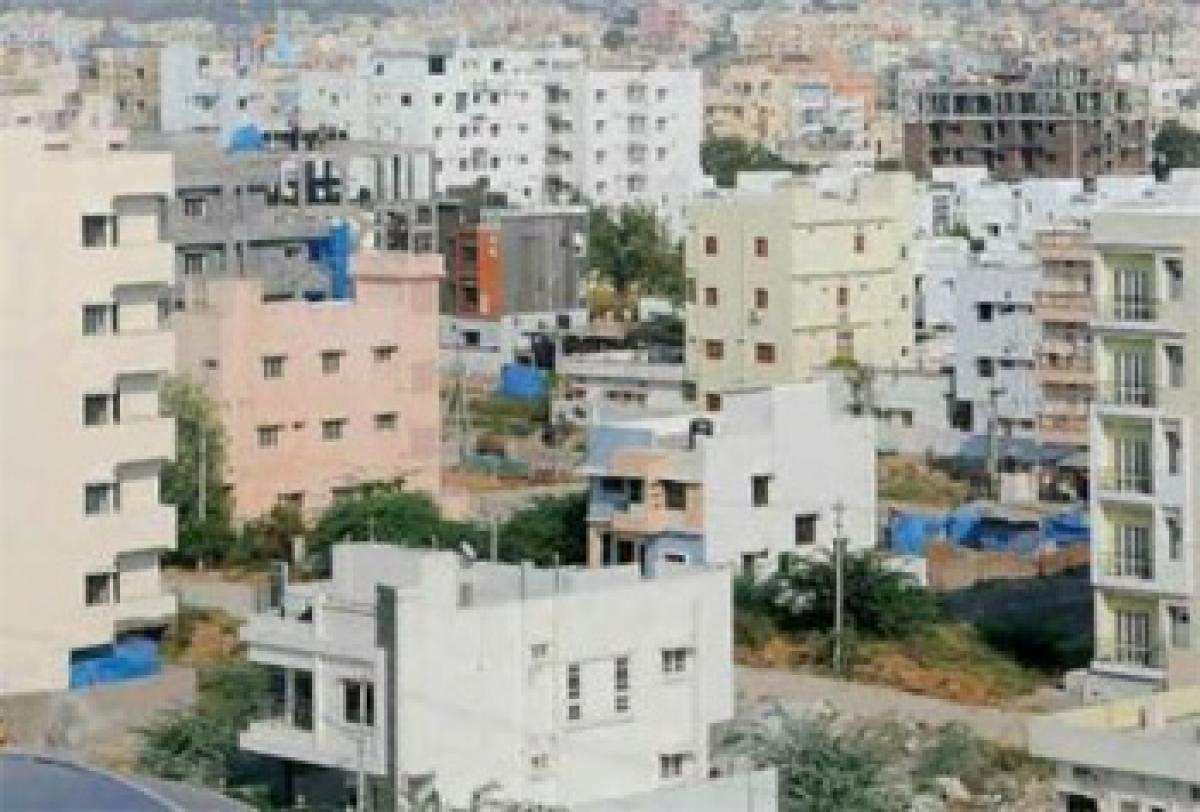Just In

Ever since the plan to regularise illegal constructions was implemented by the then Telugu Desam government in 1998, the layout and building regularisation schemes have become major money-spinners for the successive governments, which have shown scant regard for the sustainable urban planning.
- GHMC sets a target of Rs 1,000 cr under LRS and BRS
- Schemes prove a major relief for land and building owners
- NGOs slam govt short-sightedness towards the haphazard construction activity
Hyderabad: Ever since the plan to regularise illegal constructions was implemented by the then Telugu Desam government in 1998, the layout and building regularisation schemes have become major money-spinners for the successive governments, which have shown scant regard for the sustainable urban planning.
With its latest edition of the land regularisation scheme (LRS) and building regularisation scheme (BRS), the Greater Hyderabad Municipal Corporation (GHMC) said to have set a target of Rs 1,000 crore and it so far had collected around Rs 100 crore as initial fee from applicants of the Schemes.
The ongoing edition of LRS and BRS was announced on November 2, 2015, for a period of 60 days, and then the last date has been extended twice. Under these two schemes, applicants have to pay an initial fee of Rs. 10,000. The other five municipal corporations in the State – Warangal, Karimnagar, Ramagundam, Nizamabad and Khammam– which have announced their own LRS and BRS schemes have received a mixed response. So far, these civic bodies could garner a net amount of Rs 54.76 crore.
These schemes may be a major relief for the land and building owners as governments regularise the illegal constructions, but they could result in a Chennai-like flood situation in the twin-cities in days to come, the experts feel. The August 2000 floods seem have taught no lesson to the city administration.
Though the Kirloskar Committee was appointed to review the floods and come up with suggestions, the Committee recommendations haven’t found any takers once they were submitted. The then MCH and its present form GHMC haven’t done much to implement the Committee recommendations.
The committee’s two major recommendations– the removal of over 1,400 encroachments on the nalas (drains) and the widening of nalas to survive either a 12 mm rain or an hour of water flow– have not been implemented. “It’s unfortunate that the government, which has promised to deal the illegal constructions with an iron hand, is, in fact, abetting them by benefitting the violators of layout and building rules. The builders demarcate the lung spaces in the layouts as per norms, to get approvals from the GHMC and Hyderabad Metropolitan Development Authority (HMDA).
But later those spaces would simply disappear as the builders convert them into plots,” the Forum for Sustainable Environment convener S Jeevananda Reddy told The Hans India. This has already been affecting the air supply and environment in the city, he added, criticising the governments’ short-sightedness to fill its coffers and benefit the real estate businessmen in the name of benefiting the denizens.
The situation is no different in Warangal, the second largest city in the State, or in other four corporations. With scores of residential colonies mushrooming in the tri-cities of Warangal-Hanamkonda-Kazipet, many tanks are being encroached and converted into residential space; leading to floods in several colonies along the Hunter road, Sammaiah Nagar and Hanamkonda bus station areas whenever there was a rain.
Surprisingly, Khammam corporation, which has been battling the traffic congestion and water-logging problems for decades, has also got a huge response from the denizens with more than 14,000 applications filed for LRS and BRS. Ramagundam and Nizamabad are also no exceptions where encroachments and illegal constructions are rampant.
By:Adepu Mahender

© 2024 Hyderabad Media House Limited/The Hans India. All rights reserved. Powered by hocalwire.com







